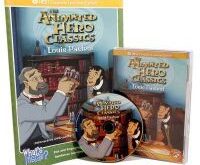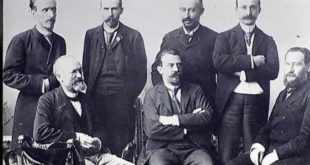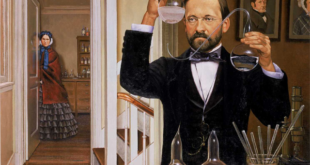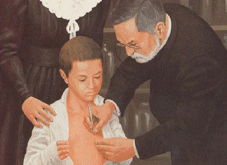Originally found in American Public Journal – March 1953 – Motion Picture Reviews
A recreation of this health hero’s contributions to medical knowledge. Produced by Sterling Films. 16 mm., black and white, sound, 28 minutes. For purchase from the producer at $100. Address them at 316 West 57th Street, New York 19, N. Y. Consult rental libraries for rental terms.
Vividly pictured in this film is the painstaking work of the great scientist in demonstrating his germ theory and his heartbreaking efforts to have it accepted. It clearly develops the scientific method through which he made his evolutionary contribution to the field of medicine.
Beginning with his disproval of the theory of spontaneous generation, many of Pasteur’s experiments are re-created, some of them in the environment where he actually did much of his research. There is a distinct feeling for the time in which he lived and for the lack of scientific understanding which so often he had to combat.
The most interesting feature in the film is that of showing through the microscope the budding and growth of spores and bacilli. These pictures are particularly vivid.
Unfortunately, the scientific accuracy is slightly marred in several ways. Though Pasteur’s paralysis is mentioned, there is little perceptible evidence of it. The laboratory technic used in handling flasks would disturb bacteriologists, but the experiments themselves are well thought out and hold interest. The description of the studies on rabies and the “Pasteur treatment” have historical value but neglect to bring the observer up to date on modern concepts about antirabic treatment.
Unquestionably, the film has educational value from an historical and scientific point of view. It can be used to good purpose, particularly in high school and college classes in courses such as biology and general science. It does not seem especially suited for use with professional groups. The picture would be useful as a motivating force in discussing the great discoveries of Pasteur and his contributions to humanity, and as a starting point in discussing the legacy Pasteur left in developing the scientific method in the study of disease. The photography and sound are effective throughout the picture, as is the narration.
GEORGE M. WHEATLEY, M.D.
 Pasteur Brewing Louis Pasteur – Science, Health, and Brewing
Pasteur Brewing Louis Pasteur – Science, Health, and Brewing 


